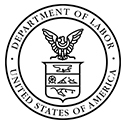|
WASHINGTON, DC - The U.S. Department of Labor's Occupational Safety and Health Administration (OSHA) has established a revised National Emphasis Program (NEP) to identify and reduce or eliminate worker exposures to respirable crystalline silica (RCS) in general industry, maritime, and construction. The NEP targets specific industries expected to have the highest numbers of workers exposed to silica, and focuses on enforcement of the new silica standards, one for general industry and maritime (29 CFR =A7 1910.1053) and one for construction (29 CFR =A7 1926.1153). These standards became effective in June 2016, and construction employers were required to begin complying with their standard as of September 23, 2017, and general industry and maritime employers were required to begin complying with their standard as of June 23, 2018. What changes were made to the NEP?
- Revised application to the lower permissible exposure limit for respirable crystalline silica to 50 micrograms per cubic meter ( =B5g/m3) as an 8-hour time-weighted average in general industry, maritime, and construction;
- Updated list of target industries, as listed in the appendix of the NEP; from this list, area offices will develop randomized establishment lists of employers in their local jurisdictions for targeted inspections;
- Compliance safety and health officers will refer to current enforcement guidance for RCS inspection procedures;
- All OSHA regional and area offices must comply with this NEP, but they are not required to develop and implement corresponding regional or local emphasis programs; and
- State Plans must participate because of the nationwide exposures to silica.
OSHA will conduct 90 days of compliance assistance for stakeholders prior to beginning programmed inspections for the NEP. Respirable crystalline silica consists of small silica particles that are generated by cutting, sawing, grinding, drilling, and crushing materials such as stone, rock, concrete, brick, block, and mortar. Inhaling the dust created during these operations can cause silicosis, an incurable lung disease, lung cancer, and chronic obstructive pulmonary disease. For more information on the health effects from silica exposure, and how employers can protect workers, visit OSHA's Safety and Health Topics webpage on Crystalline Silica. Under the Occupational Safety and Health Act of 1970, employers are responsible for providing safe and healthful workplaces for their employees. OSHA's role is to help ensure these conditions for America's working men and women by setting and enforcing standards, and providing training, education, and assistance. For more information, visit www.osha.gov. The mission of the Department of Labor is to foster, promote, and develop the welfare of the wage earners, job seekers, and retirees of the United States; improve working conditions; advance opportunities for profitable employment; and assure work-related benefits and rights. # # #
| 

